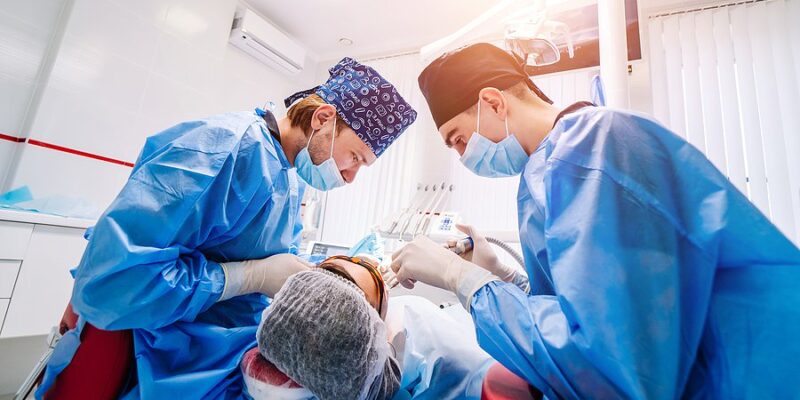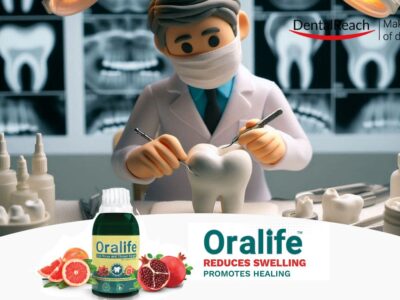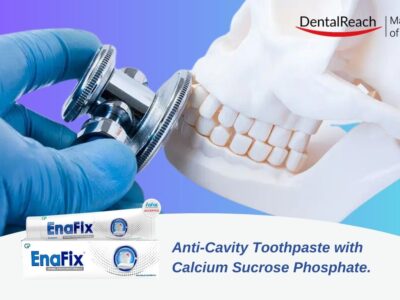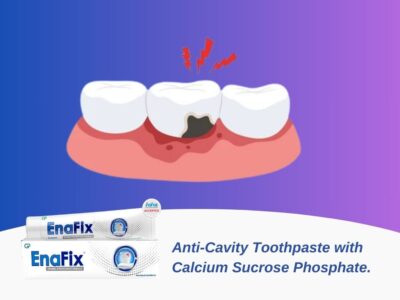The patient, Tomas Schröck who underwent a dental implant surgery under self-hypnosis without any anesthesia reported feeling hardly any pain during the entire procedure.
Tomas Schröck,is a hypnotherapist with his own practice in Leipzig,Germany.He wanted to do a self experiment and asked his dentist,Dr Nico Lindemann, if he would support him in the same.
Dr. Lindeman was doubtful in the beginning as he was quoted saying “Even though I had been involved with hypnosis before, owing to the patient’s desire for self-hypnosis, I would have to hand over the responsibility of pain elimination solely to him.
On the one hand, I was optimistic that it would work. On the other hand, I wondered whether I could trust him enough so that the procedure could be performed properly as planned,” Lindemann told.
Hypnosis has always been promoted as a non-pharmacological intervention to enhance overall patient comfort while reducing fear and anxiety. Schröck wanted to raise awareness of hypnosis especially for patients afraid of dental treatments or with drug intolerance.
“During self-hypnosis, one assumes both the role of hypnotist and the person being hypnotized and gives oneself corresponding stimuli. At first glance, this may seem contradictory. However, once one understands how hypnosis works, it becomes clearer,” Schröck explained.
Remember the monotonous car journeys, during which the mind drifts off into everyday thoughts and the journey thus quickly passes?! That is the technique used in self-hypnosis.Individually selected memories or images are trained until they function largely automatically and only a few stimuli from the consciousness are necessary.
For his procedure, Schröck employed a memory of walking barefoot through an ice-cold mountain lake. “I chose this memory for two reasons. The feet are physically furthest away from the mouth and thus from the site of surgery, and I associate a strong feeling of euphoria with this memory. Euphoria and fear or negative pain tend to be mutually exclusive in my world,” he explained.
He continued: “The art of self-hypnosis is to consciously self-regulate oneself on one level in order to have unconscious experiences on another level. That means you are not switched off or entirely passive in self-hypnosis. As soon as I became too aware of what was happening in my mouth, I directed my attention back to my resource place in the mountain stream.” For most part of the procedure, Schröck only felt greatly diminished pain.
How did the dental team managed to perform well?
The team was a little nervous before the procedure. But as all the eventualities like ‘What if the patient experiences severe pain in the middle of procedure’ or ‘ what signal patient should give in case he felt pain or he needed a break to get back into a deep enough state of hypnosis’, were decided beforehand, the entire procedure went very smoothly.
Another important point which needed consideration was regarding the bleeding. The vasoconstriction due to adrenaline in local anesthesia causes much less bleeding and the condition here was pretty different. The patient under self-hypnosis forgot to concentrate on control 0f bleeding, which according to him is also possible through hypnosis. He plans to work on that aspect in the subsequent operation, during which the cover screw will be removed.
“I am very satisfied with the result. In retrospect, I was even a little surprised at how quickly it went, and how easy it was to turn off the pain,” Schröck said.




















Comments